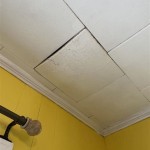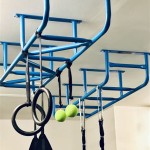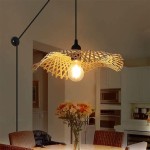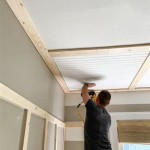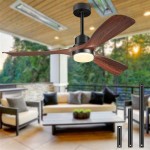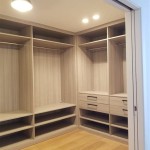How To Drape Fabric From Ceiling: A Comprehensive Guide
Draping fabric from the ceiling is a transformative decorating technique that can add elegance, drama, and a touch of whimsy to any space. It is commonly used for special events like weddings, parties, corporate gatherings, and even to enhance the ambiance of residential interiors. Successfully executing fabric draping requires careful planning, the right materials, and a systematic approach. This guide provides a detailed explanation of the process, covering everything from selecting appropriate fabrics to securely mounting and arranging them.
Planning and Preparation: Laying the Foundation for Success
Before commencing any physical work, meticulous planning is crucial. This phase involves determining the desired aesthetic, assessing the ceiling structure, and calculating the necessary materials. Neglecting this foundational step can lead to unsatisfactory results and potential safety hazards.
First, determine the intended effect. Will the fabric drape in a symmetrical, structured manner, or a more free-flowing, organic style? Research different draping styles online or in design magazines to gather inspiration. Sketches and diagrams can be helpful in visualizing the final product. Consider the existing decor, lighting, and the overall theme of the event or room. The fabric's color, texture, and pattern should complement the existing environment.
Next, evaluate the ceiling structure. Identify the material it is made from (drywall, plaster, concrete, etc.) and locate any obstructions like light fixtures, sprinklers, or ventilation systems. Note the height of the ceiling and any architectural features that might influence the draping design. Different ceiling materials require different anchoring methods. Drywall and plaster ceilings typically require anchors, while concrete ceilings may necessitate specialized drilling equipment and heavy-duty fasteners.
Measure the area to be draped accurately. Calculate the amount of fabric needed based on the desired draping style. Factor in extra fabric for swags, folds, and any potential adjustments. A general rule of thumb is to add at least 20% extra fabric to the calculated length. This allows for creative flexibility and minimizes the risk of running short. Consider the width of the fabric and how many panels will be required to cover the desired area. Wider fabrics require fewer seams and create a more seamless appearance.
Finally, gather all the necessary materials. This includes the fabric itself, anchoring hardware (hooks, eye bolts, screws, anchors), measuring tape, a ladder or scaffolding, safety glasses, gloves, a drill (if needed), scissors or a fabric cutter, and potentially a sewing machine for hemming or creating custom lengths.
Fabric Selection: Choosing the Right Material for the Task
The choice of fabric significantly impacts the overall look and feel of the draped ceiling. Various factors, including the material's weight, texture, opacity, and fire resistance, should be considered. The selected fabric should not only be aesthetically pleasing but also practical and safe for the intended application.
Lightweight fabrics like chiffon, voile, and tulle are popular choices for creating soft, flowing drapes. These fabrics allow light to filter through, creating an airy and ethereal atmosphere. They are relatively inexpensive and easy to work with, making them suitable for beginners. However, they can be more prone to wrinkles and may require careful handling.
Medium-weight fabrics like satin, crepe, and broadcloth offer a balance between elegance and durability. They provide more structure than lightweight fabrics and drape well without being too heavy. Satin creates a luxurious, shimmering effect, while crepe offers a more subtle texture. Broadcloth is a versatile option that is both affordable and easy to maintain.
Heavier fabrics like velvet, brocade, and damask are ideal for creating a dramatic and opulent effect. These fabrics add a sense of richness and sophistication to any space. However, they are more difficult to work with due to their weight and thickness. They also require more robust anchoring systems to support their weight. In some cases, lining may be required to prevent the fabric from sagging or distorting.
Consider the fire resistance of the fabric, especially for events in public spaces. Opt for fabrics that are inherently fire-retardant or that have been treated with a fire-retardant spray. Check local fire codes and regulations to ensure compliance. It is also advisable to perform a small-scale test of the fabric's flammability before using it for a large-scale draping project.
Finally, consider the maintenance requirements of the fabric. Some fabrics are machine washable, while others require dry cleaning. Choose a fabric that is easy to clean and maintain, especially if the draping is intended for long-term use.
Installation Techniques: Securing and Arranging the Fabric
The installation process involves securely attaching the fabric to the ceiling and arranging it according to the planned design. This step requires precision, patience, and an understanding of basic anchoring techniques. Ensuring the fabric is properly secured is paramount for safety and aesthetic appeal.
Select appropriate anchoring hardware based on the ceiling material and the weight of the fabric. For drywall and plaster ceilings, use drywall anchors or toggle bolts to provide a secure hold. For concrete ceilings, use concrete screws or expansion anchors. Ensure the anchors are rated to support the weight of the fabric plus a safety margin. Test the anchors by applying pressure before attaching the fabric.
Install the anchors according to the planned draping design. Space the anchors evenly to distribute the weight of the fabric and prevent sagging. Use a level to ensure the anchors are aligned horizontally. If using hooks, face them in the desired direction of the drape. For symmetrical designs, use a measuring tape and laser level to ensure accurate placement.
Attach the fabric to the anchors. Use S-hooks, carabiners, or zip ties to connect the fabric to the anchors. Ensure the connections are secure and that the fabric is evenly distributed. Start by attaching the fabric at the center points and then work outwards. This helps maintain symmetry and prevents the fabric from becoming uneven.
Arrange the fabric according to the planned draping style. Create swags, folds, and pleats to add dimension and visual interest. Use clamps or safety pins to temporarily hold the fabric in place while adjusting the arrangement. Experiment with different draping techniques until the desired effect is achieved.
Address any loose ends or imperfections. Trim excess fabric and hem any raw edges. Conceal any visible hardware with decorative elements like ribbons, flowers, or beads. Ensure the fabric is free of wrinkles and creases. Use a steamer or iron to remove any remaining wrinkles. Regularly inspect the draping for any signs of sagging or loosening, and make adjustments as needed. This regular check is especially important for events where large numbers of people will be present.
Consider adding lighting to enhance the draping. Uplighting can create a dramatic effect, while fairy lights can add a touch of whimsy. Position the lights strategically to highlight the fabric's texture and color. Use dimmers to control the intensity of the lighting and create different moods. Ensure the lighting is safe and does not pose a fire hazard. LED lights are a good option as they produce very little heat.
By following these detailed steps, you can successfully drape fabric from the ceiling and transform any space into a stunning environment. Remember to prioritize safety, plan meticulously, and choose the right materials for the desired effect.

Diy Ceiling Drapes On A Budget Easy Draping Tutorial

Ceiling Fabric Draping Add A Majestic Touch At Your Venue Canvas Etc

Ceiling Fabric Draping Add A Majestic Touch At Your Venue Canvas Etc

Wave Style Ceiling Drape Tutorial Georgia Expo

Wedding Ceiling Draping Fabric Ideas Rent Hanging Kit 25

Ceiling Fabric Draping Add A Majestic Touch At Your Venue Canvas Etc

Updated Fabric Ceiling Tutorial Step By Diy Kristen Marie

How To Decorate Ceiling With Tulle And Lights

Wedding Ceiling Draping Fabric Ideas Rent Hanging Kit 25

Ceiling Drapery Décor Satinchair Chicago Il Luxury Wedding Design Studio Chicagoland S Premier Decoration Company
